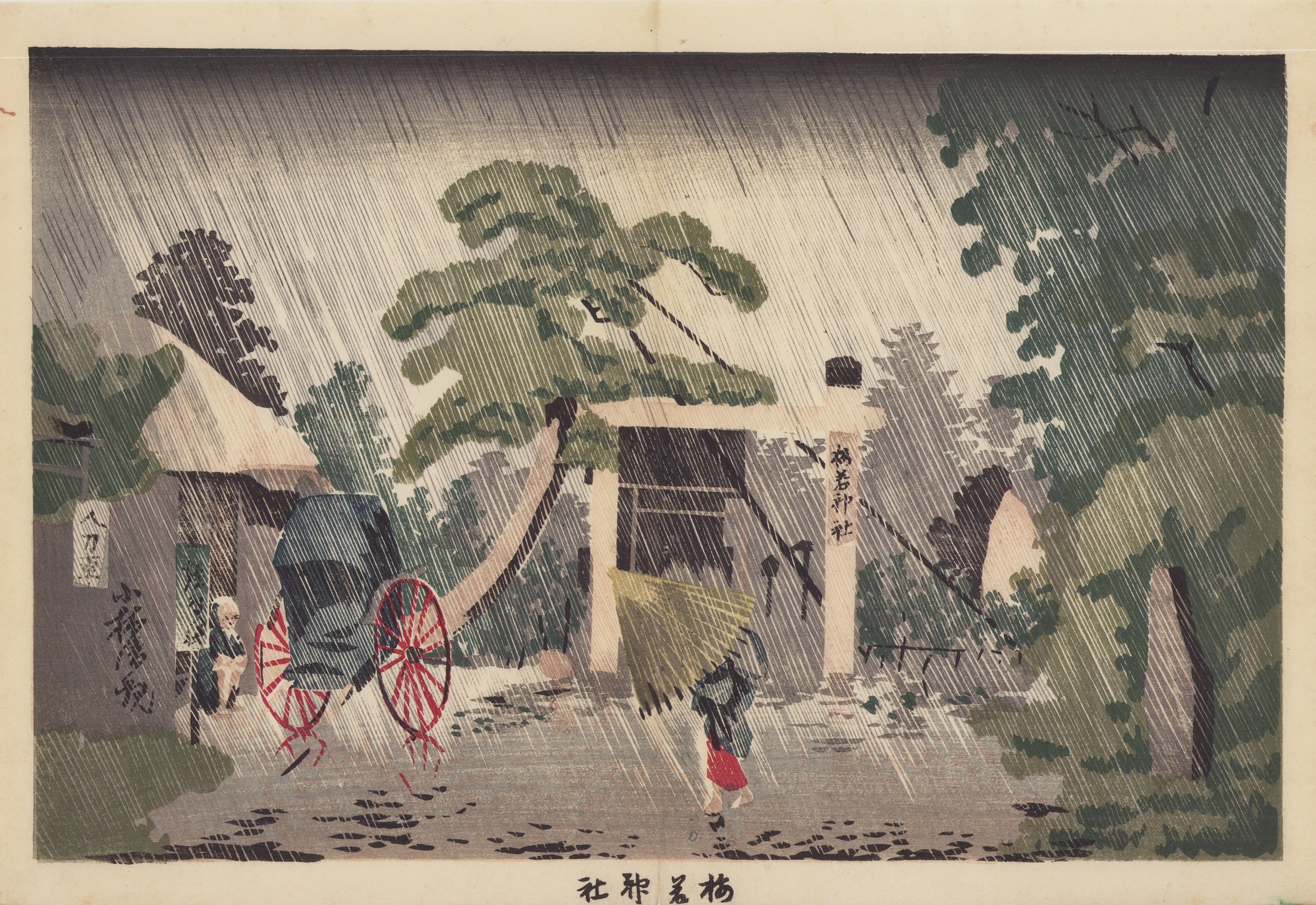Kobayashi Kiyochika (1847–1915)
Perhaps no Japanese woodblock print artist bridged the styles of the Edo and Meiji eras as well as Kobayashi Kiyochika. While some of his notable designs, especially his bijin or “beautiful women” prints, harkened back to the classic days of Ukiyoe, his later work documented the rapid modernization and Westernization of Japan. Indeed, he experimented — at times more successfully than others — with depicting light and shade in the manner of Western art.
Apparently self-taught, Kiychika’s first known prints date from the 1870s and are rampent with signs of modernization — red brick buildings and trains proliferate. Then he took a step back, creating “100 Famous Views of Musashi,” a modern homage to Hiroshige and the beauty of then-vanishing traditional Japan. After this he mysteriously disappeared from the scene before emerging to focus on dramatic war scenes and more views of fast-evolving Tokyo. Later, he worked as a newspaper illustrator. He died in 1915, having travelled through time.


